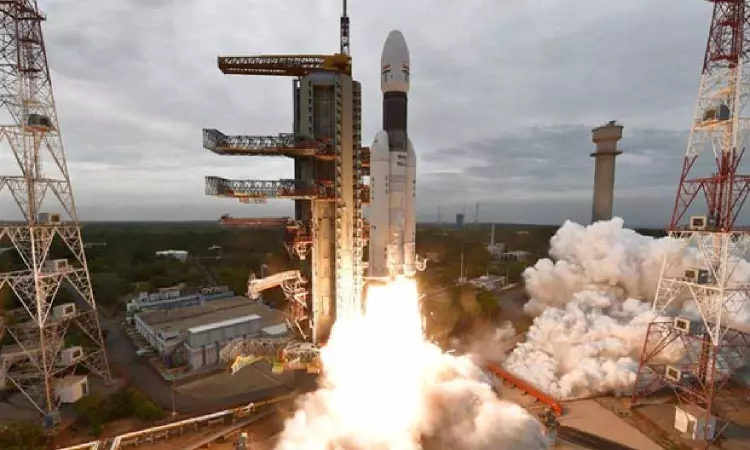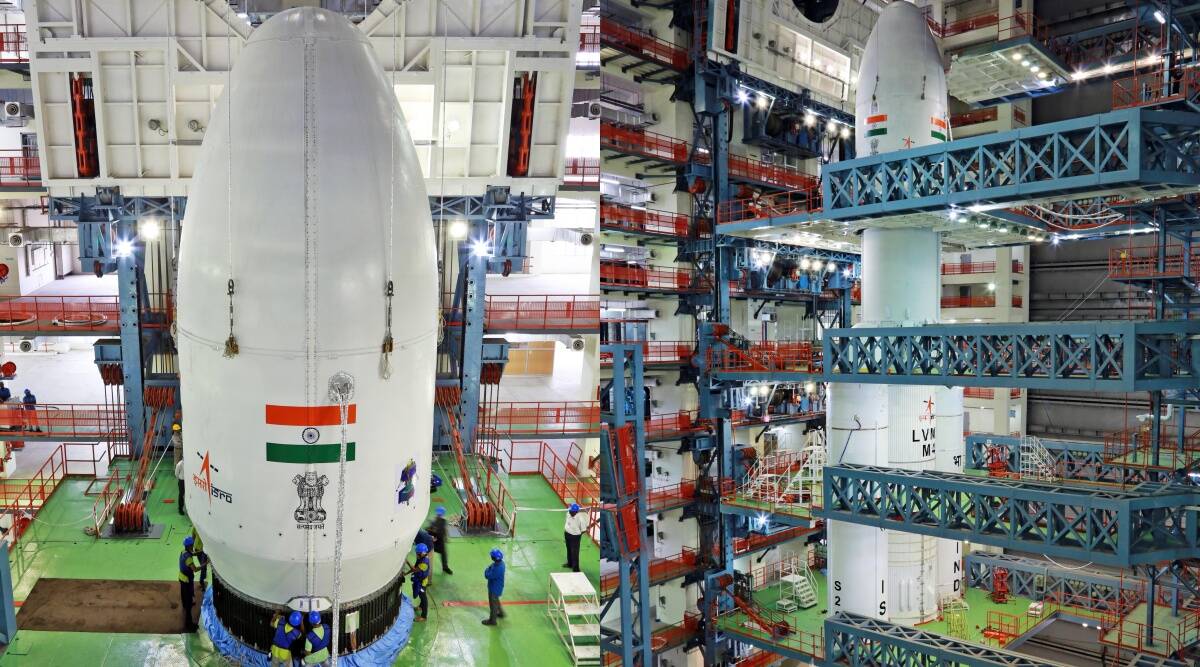The Indian Space Research Organisation (ISRO) achieved a significant milestone by successfully integrating the encapsulated assembly containing the Chandrayaan-3 spacecraft with the LVM3, a new heavy-lift launch vehicle. This accomplishment took place at the Satish Dhawan Space Centre in Sriharikota. Chandrayaan-3 serves as a follow-up mission to Chandrayaan-2, aiming to demonstrate the complete capability for a safe lunar landing and roving on the lunar surface. The Chandrayaan-3 mission is scheduled to launch between July 13 and July 19, with ISRO officials targeting July 13 as the desired launch date. The mission carries a suite of scientific instruments to study various lunar aspects, including the thermophysical properties of the lunar regolith, lunar seismicity, lunar surface plasma environment, elemental composition near the landing site, and even spectro-polarimetric signatures of Earth from the lunar orbit.
Prior to this successful integration, the Chandrayaan-3 spacecraft underwent rigorous testing to ensure its resilience against the intense vibration and acoustic conditions experienced during launch. Comprising three modules—propulsion, lander, and rover—Chandrayaan-3 represents a complex engineering feat. The propulsion module, equipped with the Spectro-polarimetry of Habitable Planet Earth (SHAPE) payload, will transport the lander and rover configuration until it reaches a 100 km circular polar orbit around the Moon. The lander carries loads such as the ‘Chandra’s Surface Thermophysical Experiment’ for temperature and thermal conductivity measurements, the ‘Instrument for Lunar Seismic Activity’ to analyze lunar seismicity, the ‘Langmuir Probe’ to assess plasma density, and a passive Laser Retroreflector Array provided by NASA for lunar laser ranging studies.
The rover’s payloads include the ‘Alpha Particle X-ray Spectrometer’ and ‘Laser-Induced Breakdown Spectroscopy’ for elemental composition analysis near the landing site. The lander’s primary role is to execute a soft landing at a predetermined lunar site and deploy the rover to conduct an in-situ chemical analysis of the lunar surface. The propulsion module will also transport the lander module to its final lunar orbit of 100 km before separation. Furthermore, the propulsion module carries an additional scientific payload for post-separation operation.Chandrayaan-3 is an upcoming lunar mission by the Indian Space Research Organisation (ISRO). It serves as a follow-up to the Chandrayaan-2 mission, which aimed to land a rover on the Moon but encountered an anomaly during the landing phase. The purpose of Chandrayaan-3 is to demonstrate the end-to-end capability of safely landing and roving on the lunar surface.

The movement of the 640-ton launch vehicle to the second launch pad at the Indian spaceport is scheduled to take place on July 7. This significant step involves carefully transporting the launch vehicle to its designated position for the upcoming mission. As the launch day approaches, a countdown timer will be initiated approximately one to one and a half days before the scheduled launch time. This marks a crucial phase in mission preparation, during which multiple health checks are conducted on the launch vehicle and its various systems and sub-systems. These checks are essential to ensure that all components function optimally and are ready for the mission ahead.
In the final stages of the countdown, another critical operation takes place—filling fuels into the rocket’s stages. The launch vehicle’s second stage is loaded with earth-storable liquid fuels, while the third stage is filled with super-cooled cryogenic fuels. These fuels play a crucial role in propelling the rocket into space during the different stages of its ascent. Moving the launch vehicle, conducting health checks, and fueling the stages are meticulously executed to ensure a smooth and successful launch. It represents a culmination of extensive preparations and signifies the final stages before the launch vehicle embarks on its mission into space.

